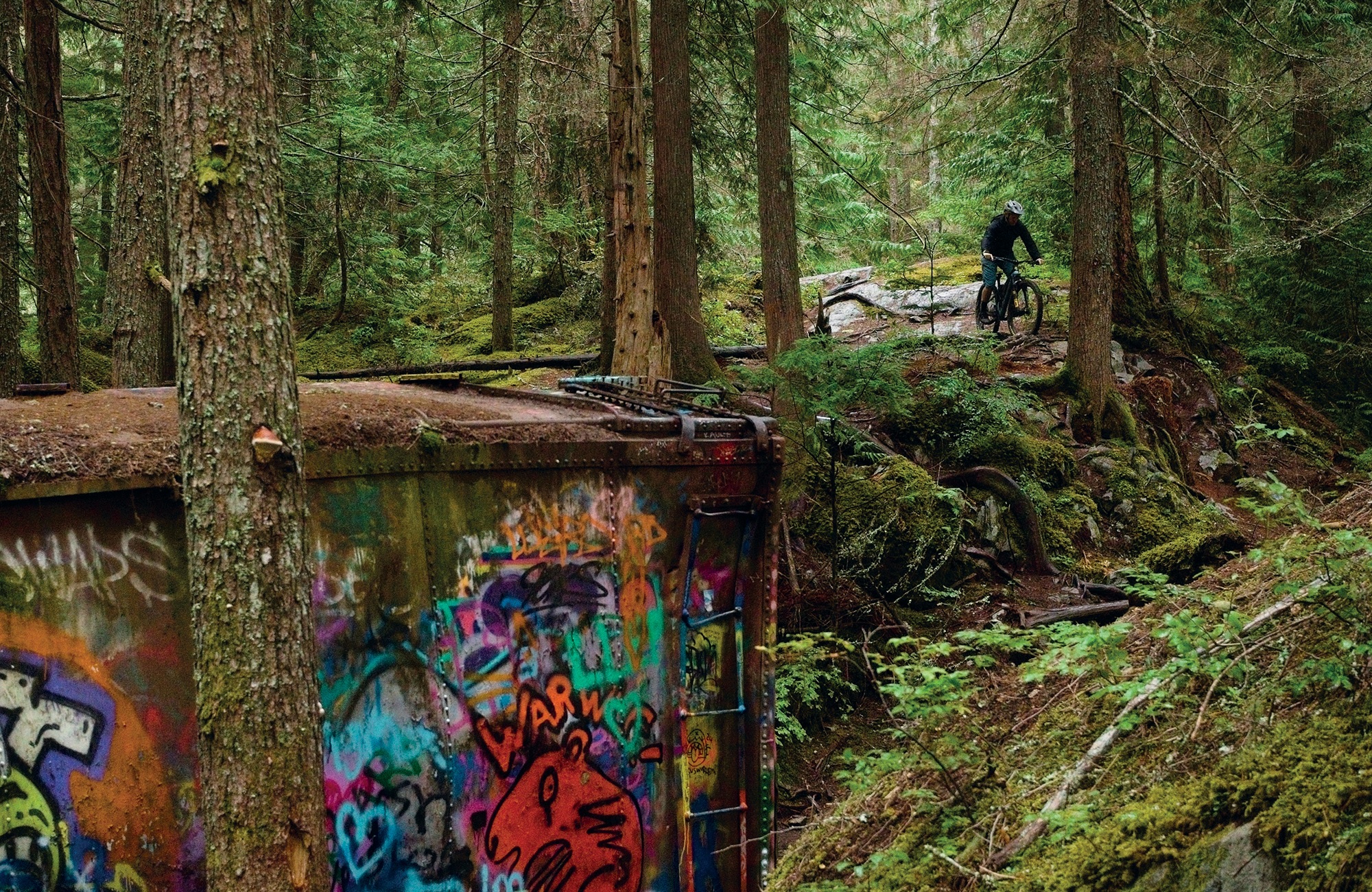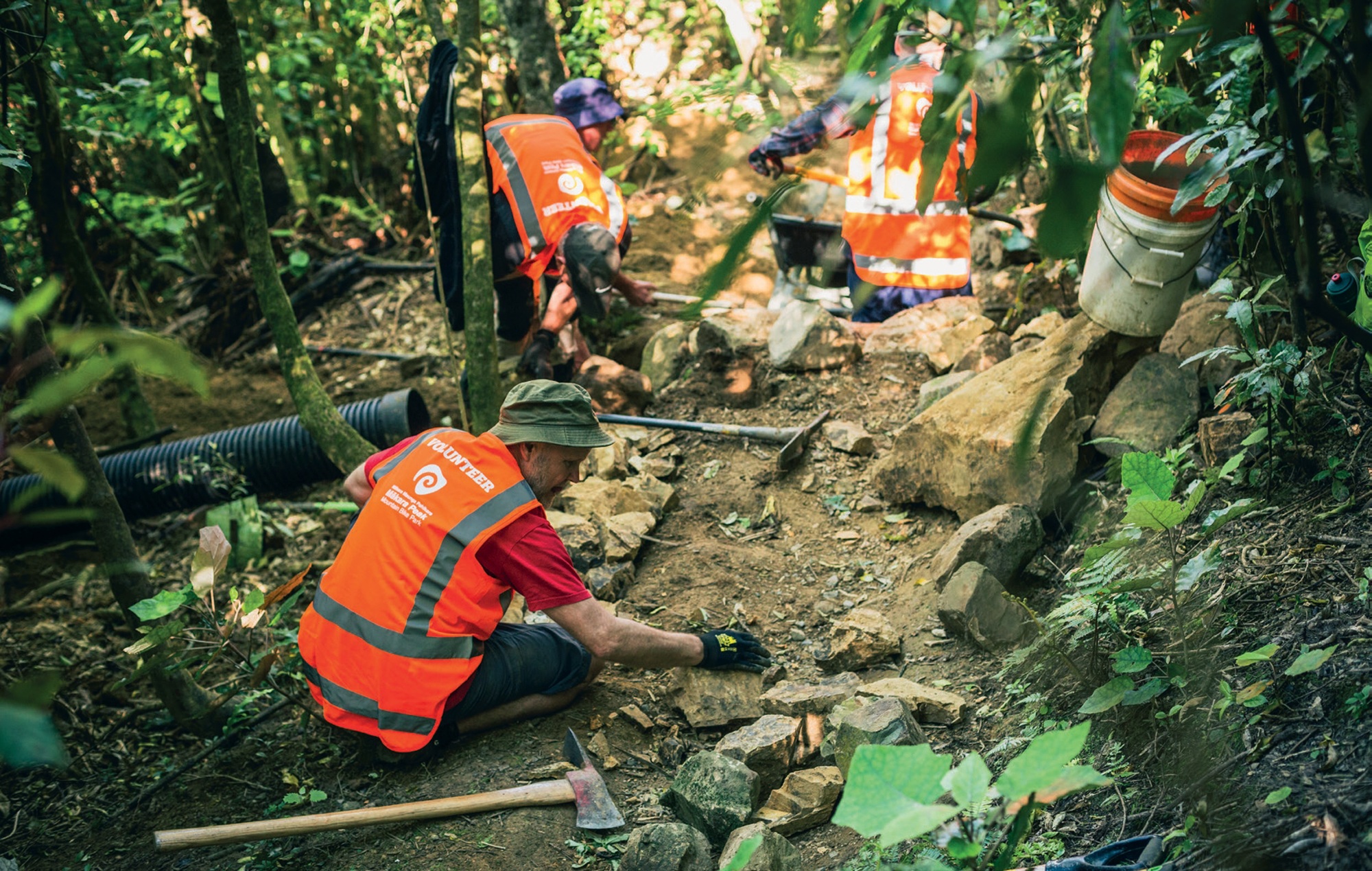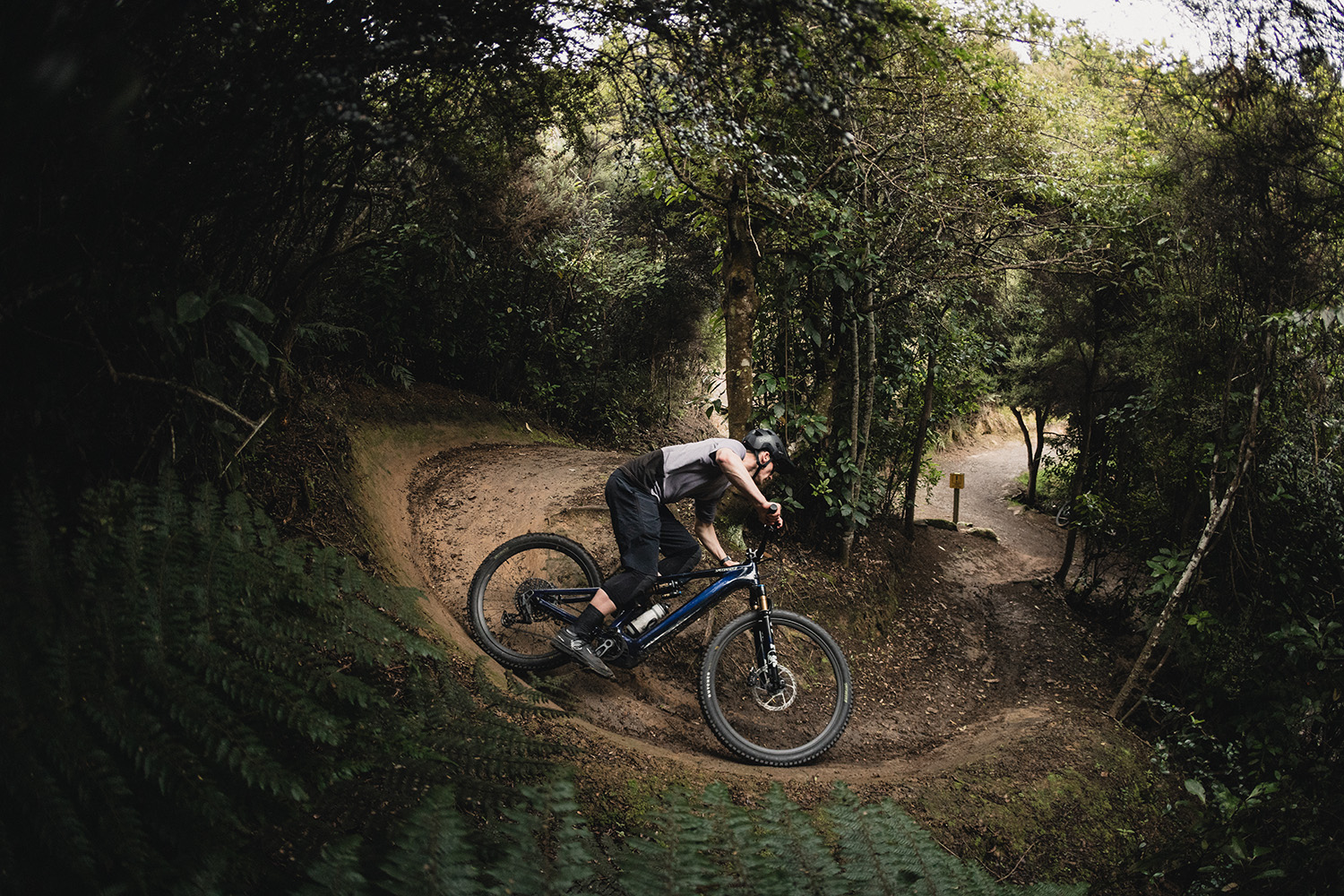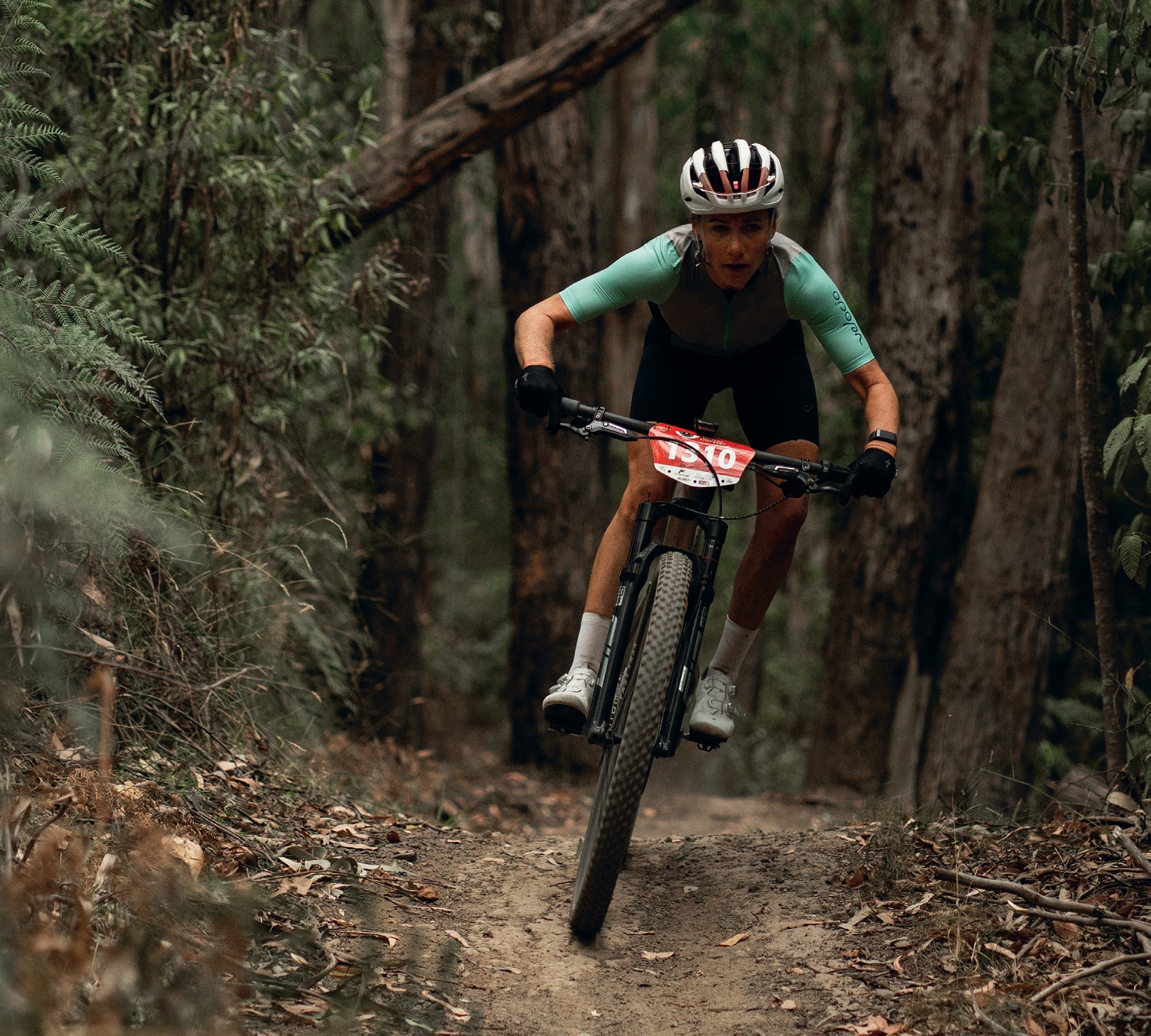A grown man’s Disneyland
Words & Images Lester Perry
When I was a kid, I saw Disneyland, in California, as a mythical place that only a privileged few kids from my school ever visited. The tales they returned with further increased the mystique of the place. Interestingly, it wasn’t ever a place I thought I would visit myself and, to this day, I still haven’t.
As I grew up, the appeal of Disneyland waned, as you’d expect, and my “Disneylands” soon became famed spots around the globe where I’d dream of riding my bike. By the early 2000’s, Whistler Bike Park had secured its spot near the top of my list of places I dreamed of visiting.
For so many reasons, none very good really, it would take another 22 years before I was finally in a plane, jetting my way to explore British Columbia for the first time; two weeks in an almost-clapped-out van, just me and a mate. A whirlwind trip through western BC started with a quick bump into Bellingham, a trip back through too many riding spots, and finished with a scant 24 hours in Whistler. This gave me a taste of what the place was about, with a few laps on the chair and an early morning Dark Crystal lap. I knew I’d need to return in the future to delve deeper into its trail network.
By early 2024, the itch to travel to ride was back—and this time, I had a larger crew. Three middle-aged dudes—Kai, Byron, and myself— and 12-year-old Myles, Byron’s son. We knew we wanted to ride abroad; a trip that would be not- too-punishing (on bodies and budget). So, a direct flight from Auckland to Vancouver was chosen. From Vancouver to Whistler, there are a few transport options, but a shuttle did the trick for us, dropping us off at the door of our accommodation. If you were keen, you could leave Auckland, take a nap on the plane, wake up in Vancouver, shuttle to Whistler, and be on the chairlift for afternoon laps.
A ten-day lift pass, the cheapest apartment we could find just a five minute ride from the main lift, and a red hot credit card: game on. Our plan was simple; ride pedal-accessed trails in the morning, then lap the park and trails accessed by the lift in the afternoon and into the evening for ten consecutive days. No days off.
Whistler has around 14,000 permanent residents, with an additional 2,000 odd seasonal residents, however, it gets a whooping three million visitors a year, 55% of whom visit in summer. That’s a lot of mountain bikers, you may think, but only around 100,000 of them visit to ride, and I’d wager a pretty hefty bet that the majority of them never make it out of the bike park.
The bike park in Whistler is awesome, with trails of all types and for all styles. There’s no need for me to go on, as you’ll have seen many of them on the internet. What’s less well-publicised (but still popular with a large number of riders) is the pedal-accessed trails. We only managed to scratch the surface of what’s in the valley outside of the bike park, but the taste we got only re-confirmed Whistler as a 1-stop shop for everything mountain biking. Every morning, we pedalled to a new trail and not once struck a dud.
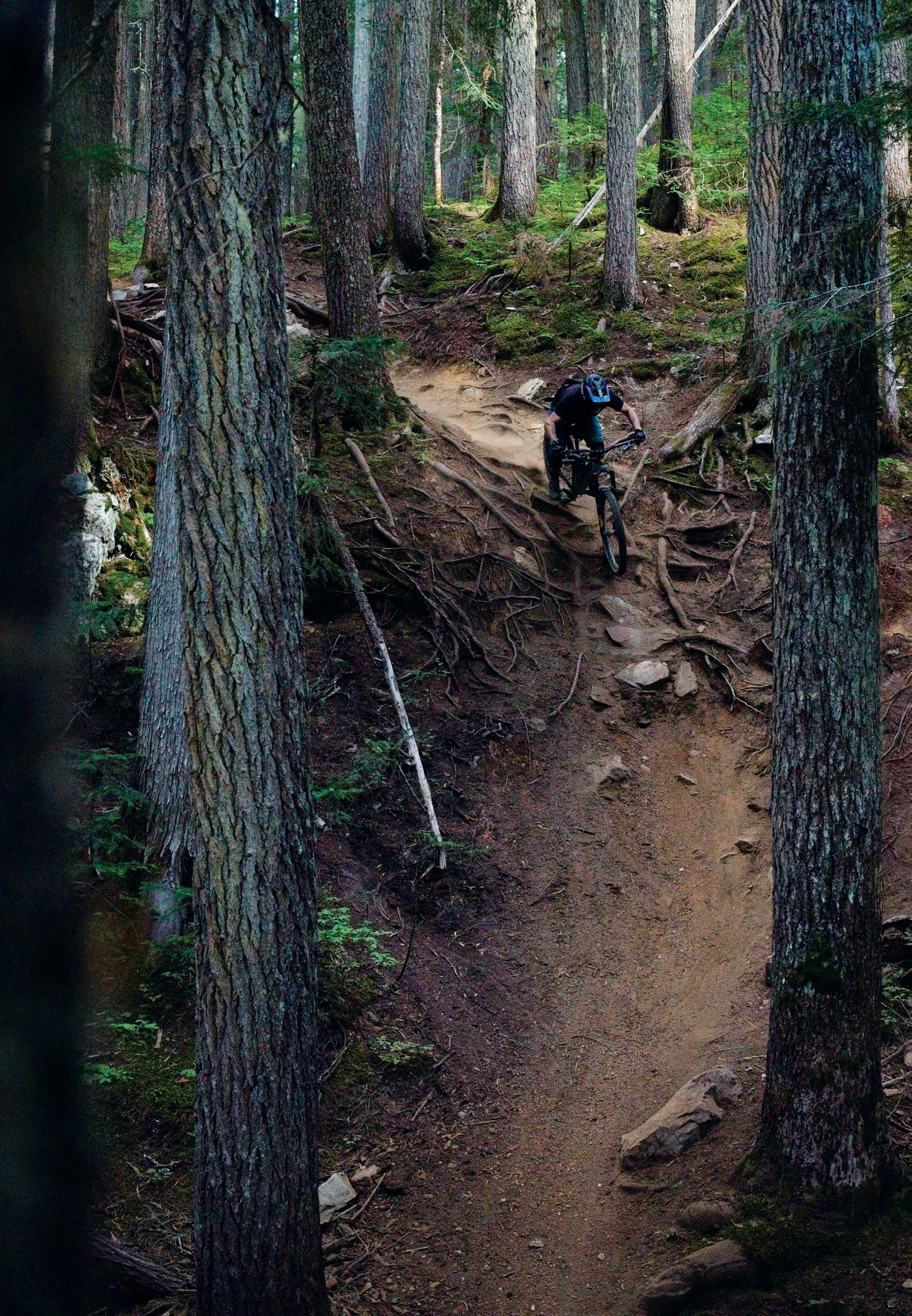
Jump onto Trailforks, and you’ll see a good web of trails down both sides of the valley. View a heat map of the area, and you’ll find a few more but, ride with a local and there’s a whole other underground network of must-do trails. The kicker is you’re pedalling to get to them, and they’re purposely made difficult to get to.
With some unseasonably wet and grim weather at play for much of our trip, the high alpine pedal-accessed trails we wanted to target were off-limits. Although the trails in the area handle the rain exceptionally well, low clouds and cold temps up high put us off some of the marathon climbs. The lower valley and bike park trails were key in these scenarios.
Although we missed a few missions due to weather, we managed just enough clear weather to make the most of a Top Of The World uplift. We rode the upper section before dropping into Million Dollar, Four Eyes, Kashmir and Kush, eventually dropping our pumped arms down into Creekside for refreshments. This is living, Barry.
If you’re into a bit of racing, Phat Wednesday is a must-do. A weekly social gravity race that is the price of a beer to enter, and you get a free beer at the finish—I guess that’s basically a net gain?
Kai and I hit the race in heinous conditions and still had a great time; the Whistler dirt, although muddy, wasn’t that slippery, and we had a blast regardless. The riding community there is next level.
Getting around Whistler is simple—just jump on the extensive bike paths and meander your way to your destination. It’s a simple way to get around and a great way to access the valley trails or tie in some touristing while you’re cruising around and hit the lake for some bombs off the jetty.
Having a bit of time, a trip to the Whistler Train Wreck was in order. One wet morning, we rolled out to it for a look. Riding from the village, we explored flatter trails off the sides of the bike path, riding some fun old-school hand-built trails that would easily be overlooked had we not gone full tourist mode. The Train Wreck spot has been featured in quite a few MTB movies over the years, so it was cool to see it in the flesh. Our ride home featured more exploring, and we stumbled upon a zone full of ‘skinnies’. Scary and exciting at the same time, I relived my youth for a bit, but after almost getting out of my depth a couple of times, I wised up and moved on.
Whistler trails can be humbling. The level of some trails is so high we really wondered if anyone would ride them—the consequences are so high. But, as much as there are some super gnarly trails and features, it’s not a rule; there are plenty of fun intermediate and advanced trails that were enough to test our limits without putting ourselves at too much risk. I guess a key thing when travelling abroad to ride is knowing your limits and being happy to swallow your pride, dismount and walk a section if there’s any doubt you’ll make it through. We saw plenty of people wandering the village with arms in slings or legs in casts. There’d be nothing worse than being on the opposite side of the globe, injured and unable to ride.
During a day in the bike park, you come across all facets of the MTB world. From first-timers protected beneath layers of rented body armour to new-school, roll-cuff-Dickies-pants and tee wearing, full-time park rats. It really is a melting pot for the world’s mountain bikers. While the ANZAC contingent is strong, there are accents from all over the world, and groups flock there to ride from all corners of the globe. It’s pretty cool to see one sport pulling so many people to one place.
Common bonds run deep in the riding community, and it was great to reconnect with people I’ve met through riding over the years who now call Whistler home (permanent or temporary); to be shown some of their adopted backyards and get a local lens on where to find not only the best riding, but the best coffee, or best value meals in town, or even a loan vehicle. If it weren’t for the connection the bike brings, chances are a trip to the area would be nowhere near as rich; it’s more than just a place to visit and ride to me.
I could wax on for pages about why Whistler is worth a visit, but I think you get the idea. With a direct flight (ex Auckland) to Vancouver cheaper than to anywhere else worth riding (aside from Tasmania), although it is overall not a cheap exercise, a 10-day trip offers insane value for money: the sheer number of riding experiences on offer once in Whistler is unparalleled. Assemble a crew, watch for cheap air tickets and go! YOLO.
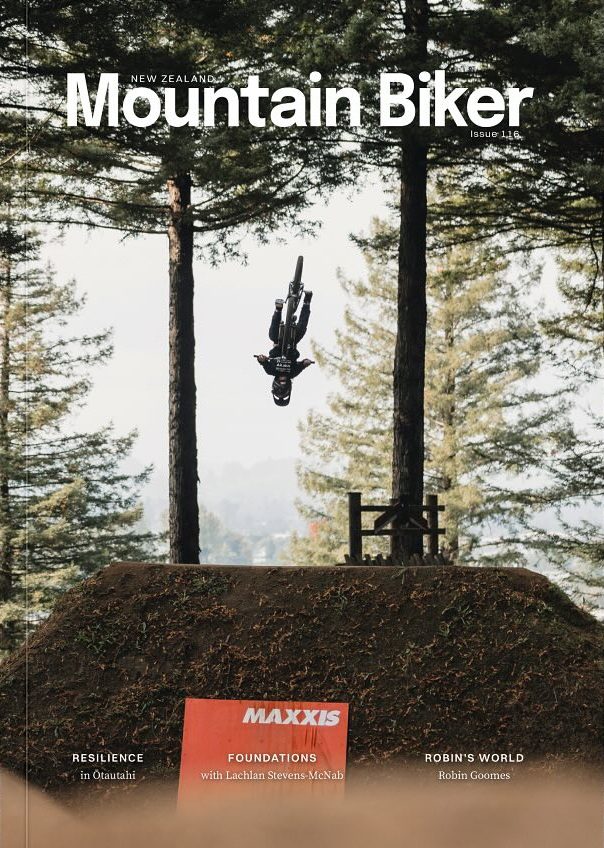
Trail Fund(s) tools for trails
Words Meagan Robertson
Images Lisa Ng
Talk about the gift that keeps giving! Thanks to Trail Fund’s recent Tools for Trails funding round, 30 Weapons of Mass Creation will help ten clubs continue their hard work creating and maintaining their local masterpieces. Read more on a few clubs and their plans below!
Since it was founded in 2013, Trail Fund NZ has been helping volunteer trail building groups around the country establish themselves and their trail networks by gifting grants, ebarrows and other tools. This Christmas, ten trail building teams up and down the country will have more tools in their sheds to further develop the amazing network of mountain bike trails around New Zealand.
“Tools are truly the gift that keep on giving, so we’re super stoked to support these clubs—large and small—with trail building and maintenance support,” says Trail Fund NZ co-president, John Humphrey. “It’s really about supporting the volunteers out there choosing to spend their time trail building – they are the ones behind the incredible trail network that has been developed in New Zealand, and that so many of us enjoy.”
The Swiss army knife of trail tools To make the application process simple, Trail Fund decided the tool of choice would be the New Zealand-made ‘Weapon of Mass Creation’—touted as the Swiss army knife of hand built trail tools, made by product designer and trail builder, Gareth Hargreaves.
“I’m a big supporter of Trail Fund and was more than happy to offer the tools at a discounted rate to get them into the hands of trail builders around the country,” says Gareth, who is a longtime member of the advisory board.
It turns out the clubs were pretty excited about the idea too, with Trail Fund receiving ten applications for the Weapon of Mass Creation (WMC) tools on offer from a wide variety of groups. Keen to see all the deserving recipients get some tools, Trail Fund decided to go big and grant each trail building group between two and four tools!
Read more about the recipients below….
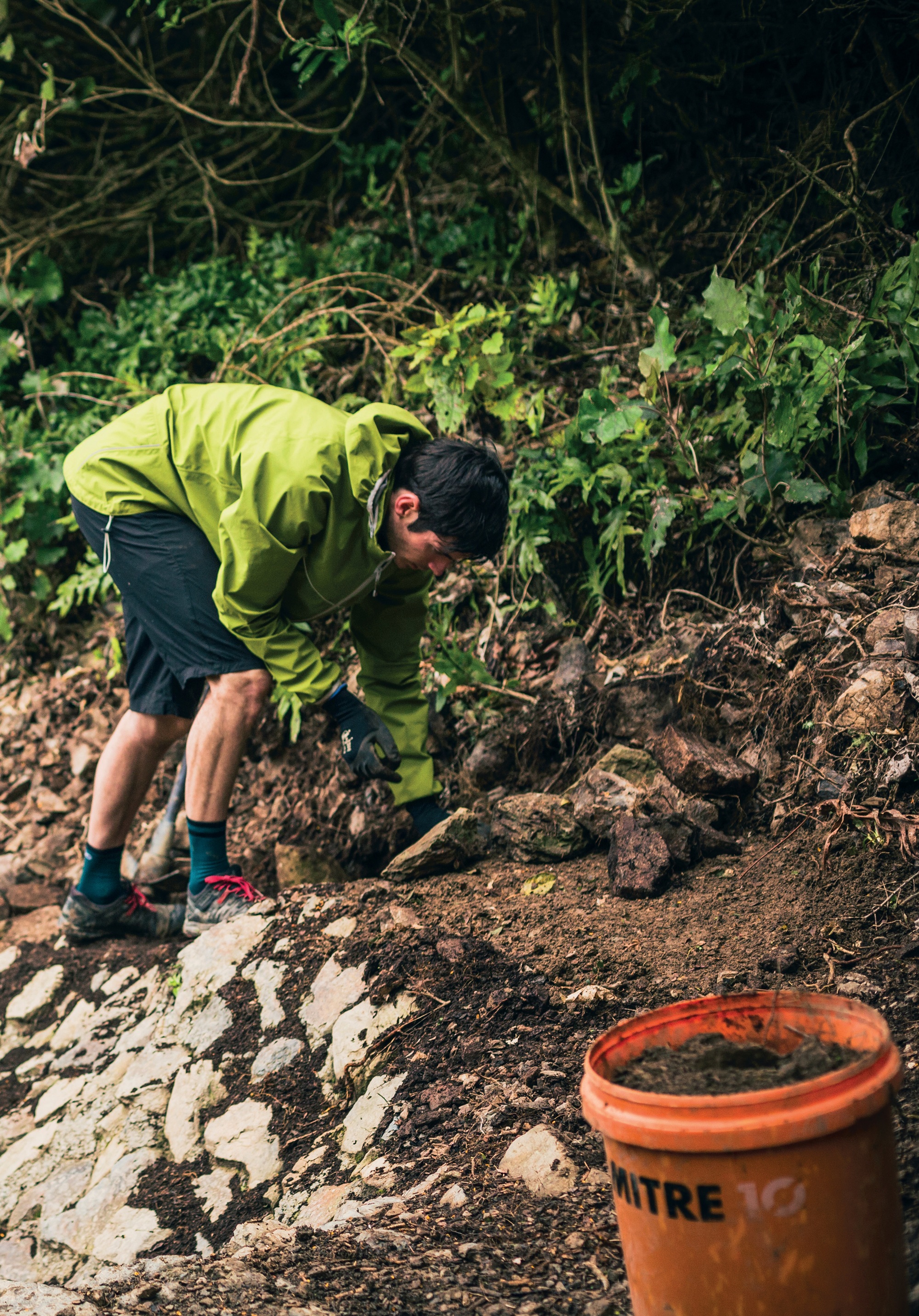
Mākara Peak Supporters—Wellington
Established by Wellington City Council in 1998, Mākara Peak Mountain Bike Park boasts the largest trail network in the lower North Island and has had an exciting year celebrating the 25th anniversary of the park.
“The Mākara Peak Supporters are super stoked to receive three WMC tools from Trail Fund in their latest tool round,” says Mākara Peak Supporters member, Andrew Cooper. “It caps a great year for the Mākara Peak MTB Park—with 2024 being our 25th anniversary and being announced as the best park in the country for 2024 by Recreation Aotearoa – a fantastic acknowledgement of our collaboration with Wellington City Council.
“The WMC tools have been a mainstay of our trail building and maintenance mahi over many years and some of them are starting to feel their age. With a pipeline of refurbishments and new trail builds coming up at Mākara Peak, it will be fantastic to restock the armoury with these new tools.”
Bike Methven—Canterbury
Based in Methven, and only a 10-minute drive from Mt Hutt, Bike Methven has a mixture of cross-country, enduro and downhill mountain bikers, as well as road cyclists, who are passionate about their riding.
The club’s home base, Mt Hutt Bike Park has more than 40km of XC, downhill and singletrack trails and is looking forward to hosting the 2025 and 2026 South Island Secondary MTB Champs.
“All the tracks we are racing will need some love this season,” says club chair, Stu Marr. “We have a number of young pinners keen to get involved and get their hands dirty doing some of this work, so it’s awesome to be a recipient of four of these tools!”
In addition to prepping all the trails for the champs, Bike Methven’s latest projects are extending the intermediate level tracks around the lower part of the Bike Park and a UCI spec BMX track in Central Methven.
Mountainbike Tauranga—Tauranga
A first time Trail Fund recipient and the host of the 2025 North Island Secondary MTB Champs, Mountainbike Tauranga is thrilled to receive three Weapons of Mass Creation to help make its current major projects at Oropi Grove a reality.
A mountain biker’s playground, Oropi Grove is Tauranga’s longest serving mountain bike park. Located on Tauranga City Council land, it includes cross-country, downhill and freeride terrain featuring a variety of purpose-built jumps and drops and ranging from Grade 2 to Grade 6. The projects currently underway include a skills development park and a Grade 4 downhill track.
“The skills area will be a focal point of the park—an area where riders of all abilities can practice their skills, and organised mountain bike lessons can take place,” says Mountainbike Tauranga committee member, Shannon Fisken.
“The new Grade 4 downhill track is a requirement for hosting all three disciplines (XC, Enduro and DH) at the 2025 North Island Secondary MTB Champs. It’s already been professionally designed and our team of volunteers will assist our professional trail builder to ensure the project is completed in a timely and cost-effective way.
“These awesome new tools will be useful on a weekly basis for our committed Thursday night crew, and at our regular working bees prior to events. Thanks Trail fund!”
Other recipients include:
Richmond Hill Trail Carvers – Nelson region
Raglan Mountainbiking Cub – Waikato
Queenstown Mountain Bike Club – Otago
Mountain Bikers of Alexandra – Otago
Nelson Mountain Bike Club – Nelson region
Silvan Forest – Nelson region
Kerikeri Mountain Bike Club – Northland

First Impressions: Specialized Turbo Levo
Words: Nathan Petrie
Images: Cameron Mackenzie
As an unashamed fan of eBikes, I’m always pumped when I get the chance to throw my leg over a new offering from a brand in the space. So, when the opportunity presented itself to try out the highly anticipated new Specialized Levo, I knew it was something I couldn’t turn down. The Levo’s a bike that holds a bit of a special place in my heart, seeing as the first generation one was the first eBike I had the chance to ride. Times have changed a lot since then though, and in the rapidly evolving world of e-bikes I was interested to see how this redesigned Levo stacked up! Pulling the bike off the rack, the first things that are noticeable about the new Levo – aside from its Stumpjumper-inspired styling – are the large Geni shock and the stout downtube. But don’t let either of these things fool you into thinking that the new Levo’s just a two wheeled couch like some full-power eBikes can be. A quick bit of carpark tuning later and it was apparent that the Levo had a lively and responsive feel. At a time where riders are facing the choice between a full-power or lightweight eBike, this kind of responsiveness with the power and range the Levo offers may provide some riders with a bit of food for thought.
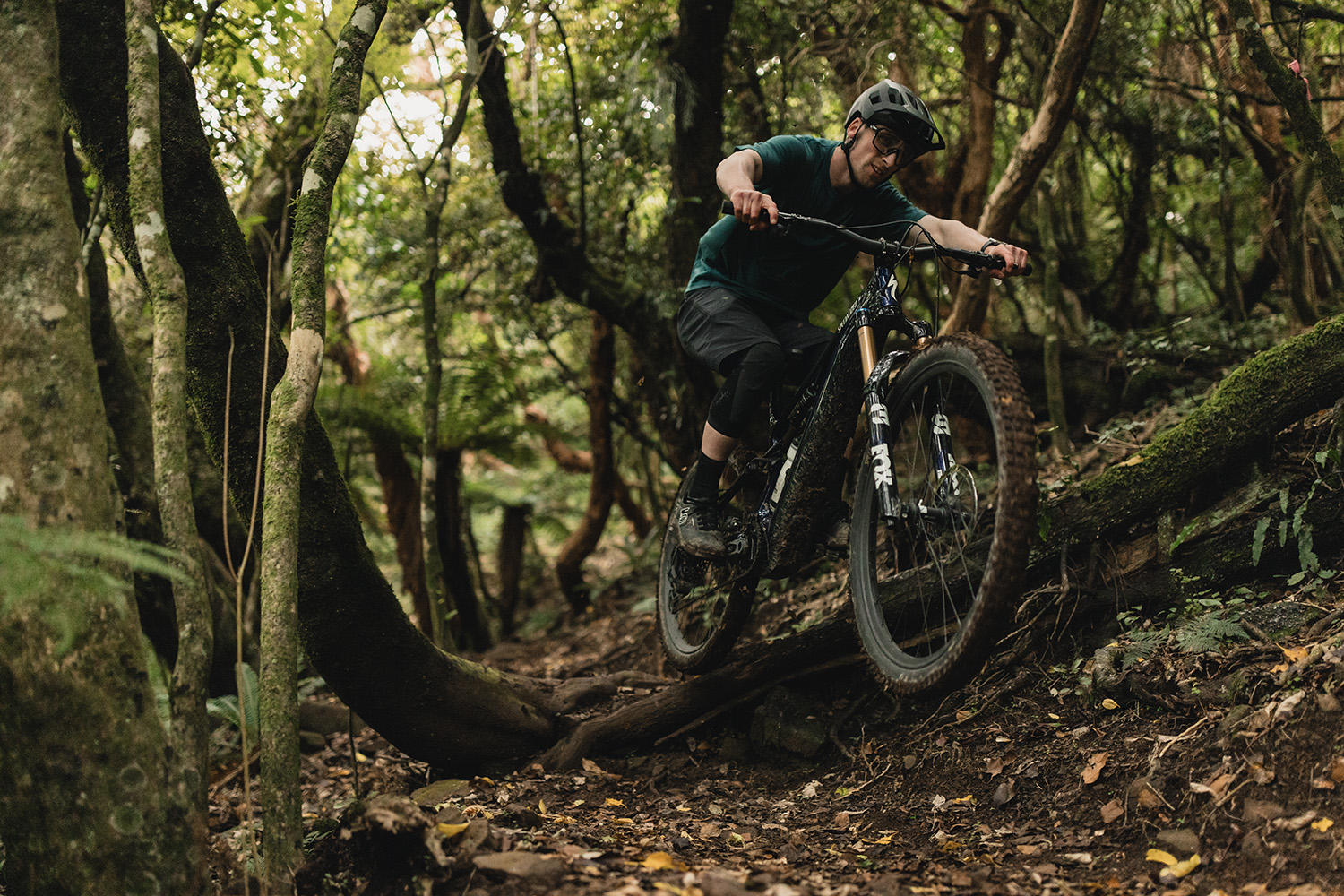
A glance over the Levo’s geometry chart and travel numbers reveals where this responsive demeanour might come from. The key figures like head-tube and seat-tube angle, chain-stay length, reach and wheelbase were all pretty standard across the board for our S4/Large size test bike. As with many of Specialized’s gravity-oriented bikes, the head angle, chain-stay length and bottom bracket height can also be adjusted to offer a more customised riding experience. On top of this, the travel – at 160mm front and 150mm rear – is a pretty ideal amount for all-round riding. The weight also feels fairly respectable too; impressive given the large 840Wh battery spec’d on our Pro level build. As has been the case for a while with Specialized eBikes, the overall package is fairly well thought out. The remote – while still wired – is fairly slim and very responsive, and the enlarged touch screen is well integrated into the top tube so you can easily keep tabs on your battery level and power setting. Specialized have added to the versatility of the system by giving riders the choice between either the 840Wh battery we had, or a smaller 600Wh aftermarket option.
On top of this, riders can use the 280Wh aftermarket extender for even more range with either battery. This gives a fairly impressive 1120Wh of capacity at its maximum which should offer plenty of scope for the kind of back country exploring eBikes are good for. The Levo also features an eBike-first in-frame storage option, with a SWAT bag that fits neatly above the battery in the head tube area. The build kit on our Pro level model was also largely what you’d expect from a bike at this price point. From the nicely finished carbon frame to the Factory Fox 38 fork, SRAM XO transmission drivetrain and carbon Roval wheels, the build kit didn’t leave you feeling short changed. The frame and motor were nice and quiet on the descents as well, with no annoying motor or cable rattle to speak of. The only possible area for improvement would be consistently speccing a 200mm dropper post as standard on S4 bikes. While many companies seem to be keen on allowing riders to size up, anything less than 200mm on what would be a large bike is just too short for the average buyer of that size.
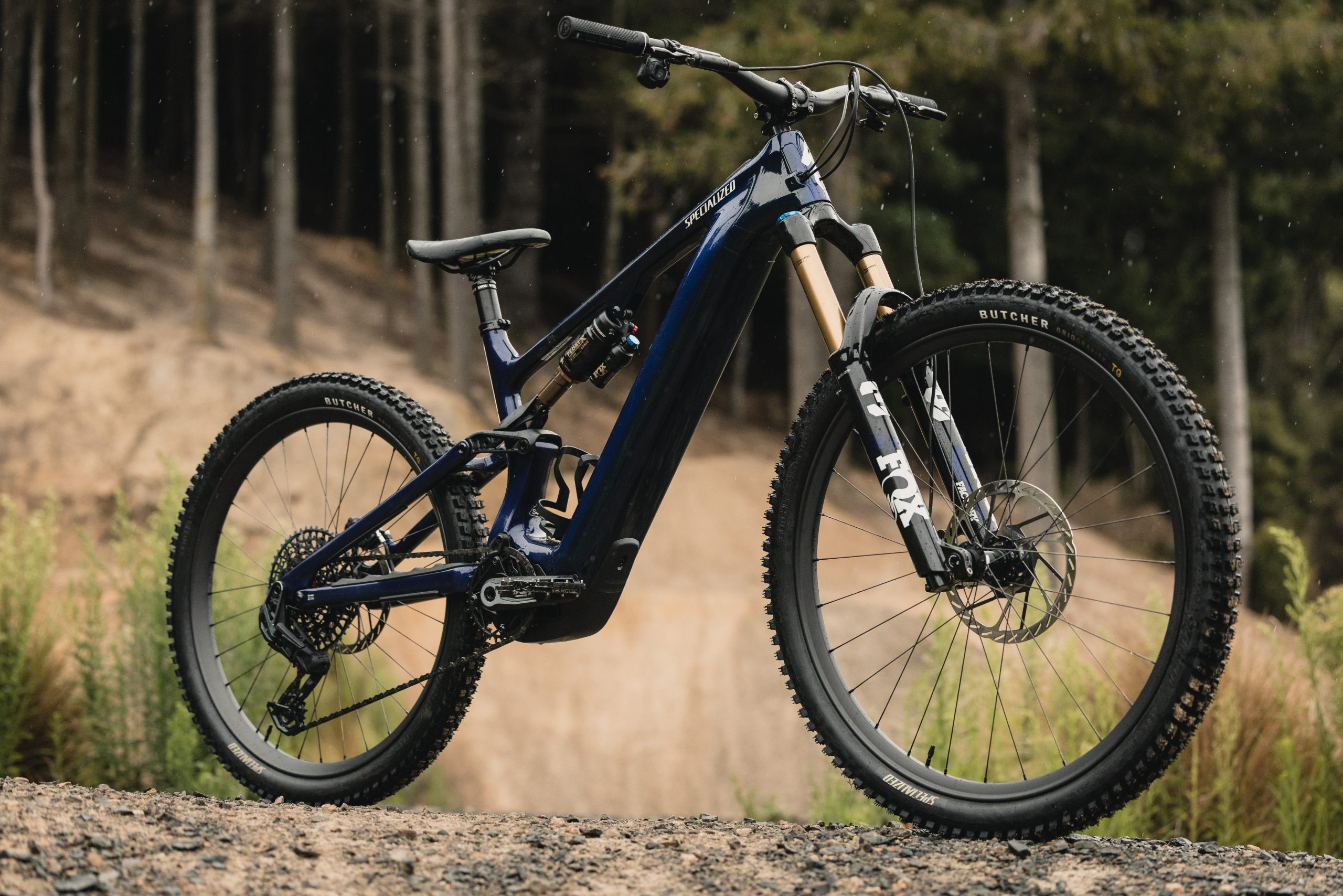
While the first ride on a new bike will always be a bit of an unfamiliar experience, having that first ride in an unfamiliar location can really highlight how easy it is to get on with a new bike. For me the first lot of riding on the Levo came in the form of a trip to Dunedin to highlight what the city had to offer as a riding destination. The first outing on the bike at Signal Hill confirmed that the bike is pretty easy to just get on and ride. The predictable handling and suspension performance means that, aside from the usual cockpit adjustments, there’s not much of a bedding in period – or any quirks to get used to. The first thing that strikes you on the climbs, is how smoothly and quietly the bike delivers its ample power and torque. Some eBike motors aren’t exactly stealthy when it comes to putting the power down with a noticeable whine from the motor. This was something Specialized put a lot of effort into when developing the new 3.1 motor. The new Levo also has a decent bump in power and torque over the outgoing model, with that power being maintained over a much wider cadence range. While my first ride didn’t feature much in the way of technical climbs, we did head up a couple of fairly steep sections of single (and double) track. Aside from some unrideable clay patches, these climbs didn’t seem to faze the Levo, even in Trail mode.
The responsiveness that was noticeable in the car park was also put to the test early on at Signal Hill, by rolling through a few sets of jumps. Some full power eBikes can be a bit of a chore to get off the ground, especially with flatter take-offs, and can still feel slightly weighty in the air. Not so with the new Levo. On both the high-speed DH style jumps on the Nationals track, and the more sculpted lips on the Jumps track, the bike was more than willing to get airborne. When in the air it was also easy to move the bike around and get some decent shape – once again, not something that is readily done with all full power eBikes. The bike also performed well on the slippery rocks and roots that we were treated to throughout our time in Dunedin. The bike struck a nice balance when it came to frame stiffness, holding its line well in rough sections but not causing the bike to feel harsh or deflect off a wet root or rock. This stiffness, coupled with the suspension and wheels, made for a comfortable and compliant ride in rough and unfamiliar terrain where you’re not always on the ideal ride line. The revamped Specialized tyres also offered plenty of traction in most places and, when combined with the SRAM Mavens, provided a nice sense of control over the slick terrain.
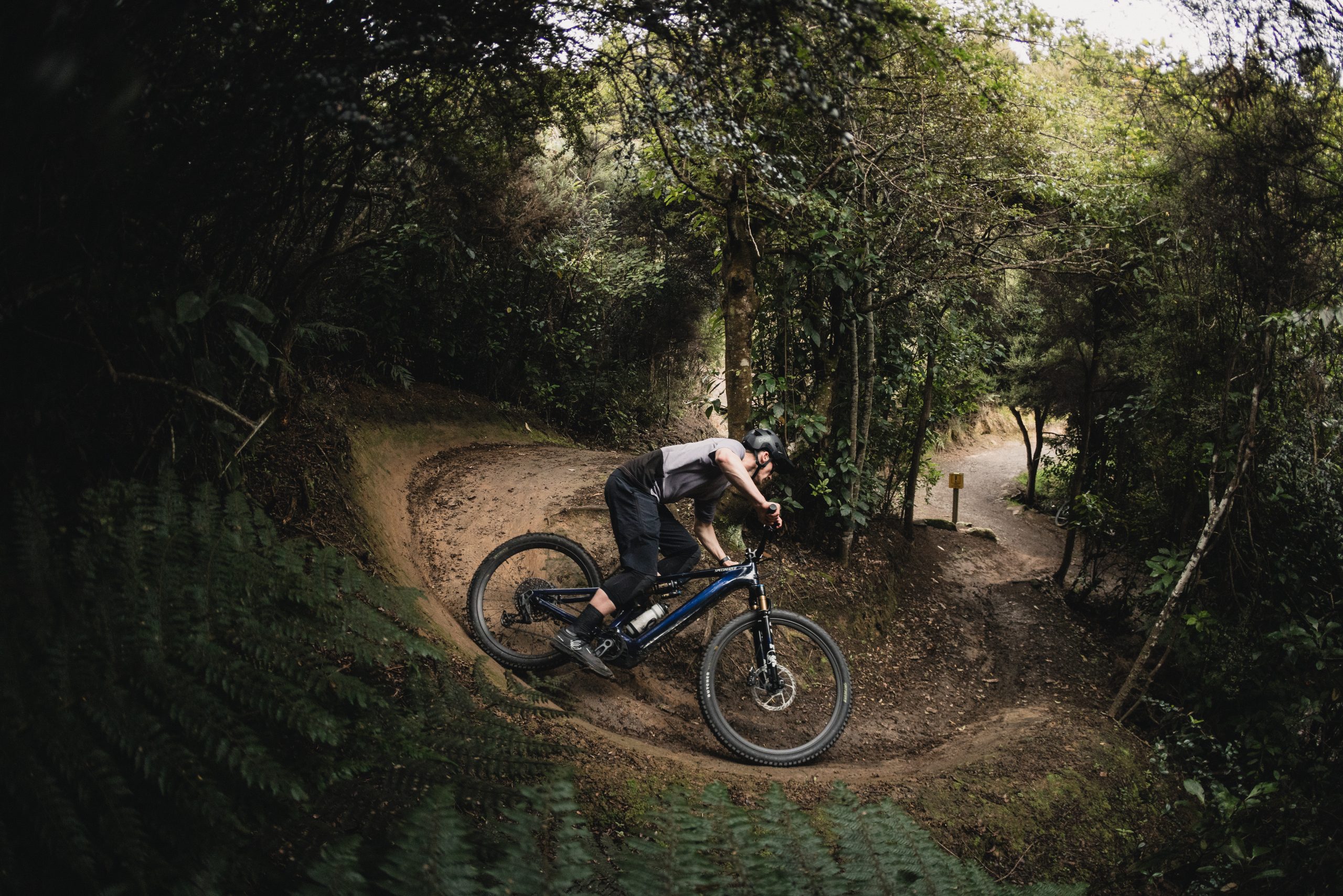
The outing in Dunedin also provided a good opportunity to put the range of the new Levo to the test, with two decent length rides in one day. While these rides didn’t cover a huge number of kilometres, we did get in near on 1200m of climbing across two locations. This left us with around 27 percent of the battery remaining by the end of the day. I also had the opportunity to try the Levo a bit closer to home, in two different situations that eBikes are good for. The first was more of a power hour-and-a-half on the trails of the Christchurch Adventure Park and Victoria Park. The adventure park in particular can be very harsh on bikes, between the stretches of exposed volcanic rock and the hard pack singletrack littered with roots and rocks. Once again, the Levo provided a smooth and controlled ride on a lot of the rough sections and handled the steeps in both locations without any issue. Another run through some jumps on the adventure park’s O-Zone trail confirmed that feeling of predictability and liveliness that came through in Dunedin.
The second outing was more about tapping into the spirit of exploration eBikes in general are great for. This outing in the Canterbury high country largely featured some lower grade grassland, riverbed traversing and hiking trail. While none of this really challenged the Levo from a motor, battery or suspension travel perspective, it highlighted the general-purpose nature of the bike. Even on less demanding terrain at a more leisurely pace, the Levo never felt like too much bike. The same responsiveness was still there, and the motor still offered decent assistance when cruising along in Eco mode. So, after a bit of time in a good range of settings, I think it’s fair to say that the Levo carries on the lineage pretty well. It’s still that same great all-rounder bike that it’s always been, but with some useful improvements to the power, range, frame and suspension performance. It’s a bike that’s easy to just get on and ride in a wide range of terrain and for a variety of ability levels. Like its lower-powered (Levo SL) and unpowered (Stumpjumper) stablemates, it gives riders user friendly geometry, travel numbers and ride feel that makes it an easy bike to feel comfortable on right away. The combination of reasonable weight, good integration, generous range and quiet, responsive motor certainly maintain its place in the top tier of full-power eBikes.
Samara Sheppard: Ups and downs
Words Lester Perry
Images Phillip Sage
For over ten years, Samara Sheppard has been quietly going about her business, making moves and climbing the global off-road racing ranks.
From Wellington PNP races and NZ National Series events, to U23 XCO World Cups and Marathon World Championships, her career up until 2024 had been primarily based around mountain biking. The new year brought a change in focus and renewed motivation, prompted by a maiden voyage at the ABSA Cape Epic and a run at the US-based Lifetime Grand Prix series.
Born in Clyde, Central Otago, Samara’s family moved to Wellington in her fourth year. Raised in an active family, she was destined to become an athlete of some sort. “My dad was into adventure racing and endurance events like the Coast to Coast and Ironman. My brother also took to cycling but steered more towards downhill racing, as well as rugby. We mostly all ran cross- country. Mum would taxi us around. My sister, a brilliant swimmer and very intelligent—she often found smarter ways to spend her time.”
Not one to be pigeonholed into a single sport, Samara “played every sport under the sun and particularly enjoyed gymnastics from a young age, then onto netball, soccer and cross-country running”. In years to come, this excitement for running would ultimately open the door to mountain biking for her.
“I had a lot of energy as a kid and was able to channel this into gymnastics. But, as I was getting older and other sports like netball and soccer became available, gymnastics was becoming a full-time sport. I quit gymnastics to try out new things. I remember some Saturdays when I was around 12 years old; I would have soccer first thing, then a game of netball, then a running race, and then dance practice. Hardly surprising that I developed a taste for endurance sports!”
After being sidelined by a running injury, Samara’s father steered her toward mountain biking as a way to stay sane. “Once I discovered how awesome it was to adventure through Wellington’s hills and around NZ, I was hooked. I started racing straight away in the local PNP club events and loved the buzz.”
School life provided two critical things for Samara: socialisation—she wanted to hang out with her friends all day—and the schoolwork satisfied her competitive spirit.
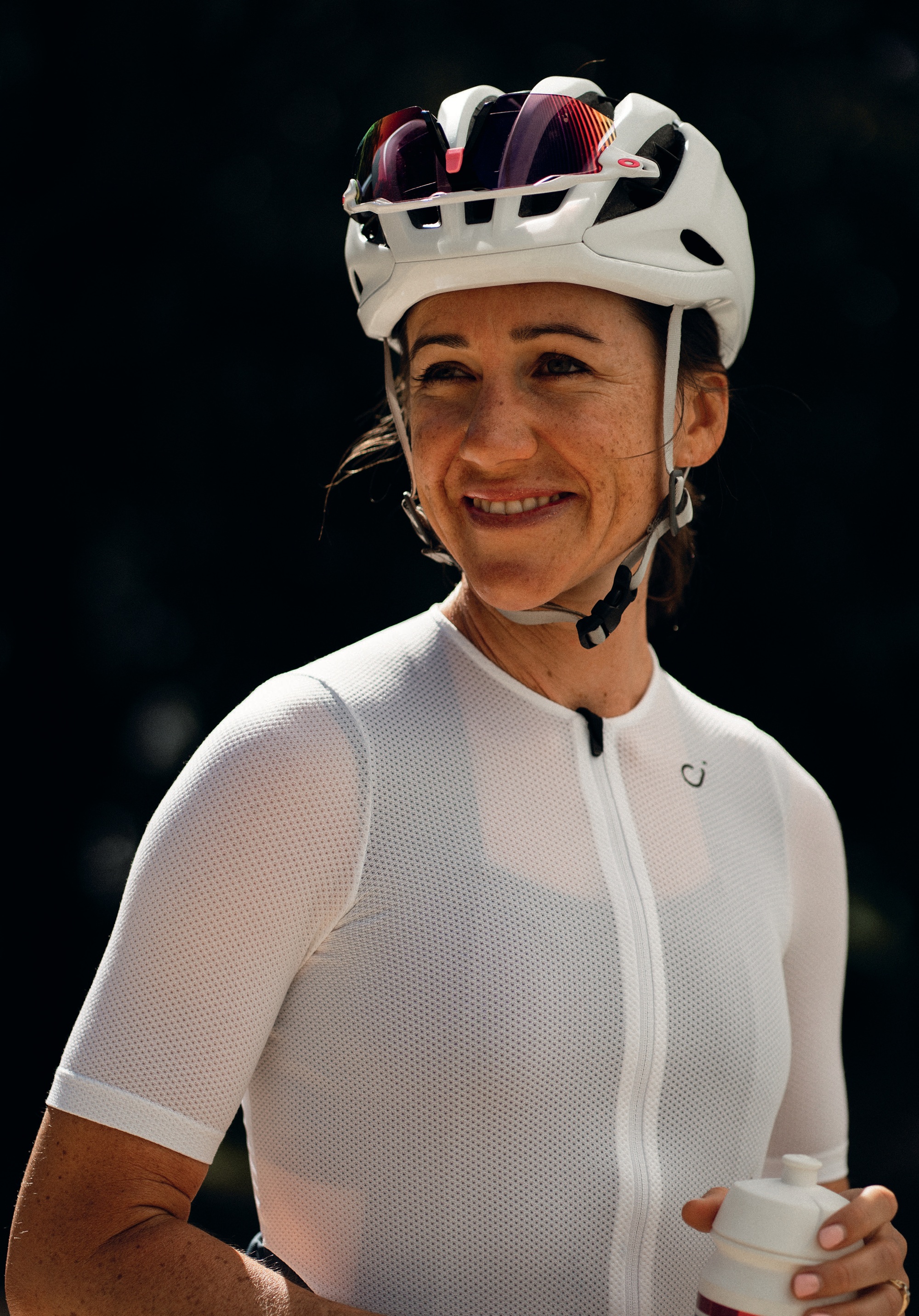
“I always found maths easy, and I treated the work like a race, always trying to be the first to complete the work with accuracy. I think I still have the record at Churton Park School for quickest to complete the basic facts sheets.”
By high school, when she could choose her own subjects, MTB had started to rule her existence: “I chose to do the minimum subjects needed to pass NCEA so I could spend more time riding my bike.”
“My first seasons racing XCO in Europe as U23 were pretty exciting—getting to explore the world and racing against the best there is. The people you get to spend time with, new experiences, and the racing buzz is always rewarding. This year is exciting because it’s a whole new scene (to me) racing in the US, but it’s an easy one to navigate as it’s an English-speaking country and where the industry gets behind privateer riders. It’s really exciting to work with some of the best brands in the business and challenge myself in various off-road race formats.”
Although Samara continues to compete globally, the inspiration to keep pushing herself comes from those closest to her: “I’m inspired by my dad, the ‘old boys’ in Wellington, and the riders I’ve had the pleasure of competing against and riding with over the years. Today, my biggest influence comes from my husband, Kyle. He always keeps cycling fun and designs the best routes to ride. I’ve always raced well when I’m having fun. And Kyle has been a major influence for that over the past eight years.”
Many athletes appear one-dimensional, all- consumed by their pursuit of physical excellence, but Samara’s not one of them. Over the COVID lockdowns, with borders closed and racing paused, many cyclists took the opportunity to get a solid training block, emerging from the period fit and raring to go. Samara chose to further herself over the period and emerged with a master’s in public health. “I couldn’t leave our local government area, and there were no races. I was working part-time at a health clinic but was out of work with all the restrictions. I decided I needed a challenge and was motivated to get a reliable job through times like those. I was also aware of how lifestyles were becoming more sedentary and could see in the healthcare clinic the impacts that has. After the pandemic, I ended up taking on a role with Wollongong Tourism as a UCI Bike City Coordinator to help make cycling an easy option for people in the city.”
When US-based Argentinian racer Sofia Gómez Villafane was on the hunt for a 2024 teammate to try and reclaim the overall title she and Haley Batten (USA) won in 2022, Sofia’s 2023 teammate, Katerina Nash, suggested Samara could be a good fit. Both have similar backgrounds, transitioning from the short XCO discipline to the more endurance-focused marathon XC and gravel-style races. Sharing Specialized as a sponsor ticked the first box, and Samara’s palmares spoke for themselves: 6th at the 2023 MTB Marathon Worlds Champs, Oceania Marathon Champ, and NZ Champion, amongst other strong results; Sofia knew they were in for a strong performance. The southern hemisphere pair would take the start as an unknown quantity. Although this was to be Sofia’s fourth Cape Epic, it would be Samara’s first, and the pair hadn’t raced as partners before. South Africa wasn’t completely uncharted territory for Sheppard, however, as she’d raced the World Cup in Stellenbosch back in 2018. The pair ultimately finished 3rd at the Absa Cape Epic, Samara becoming the first Oceania rider to finish on the podium at this prestigious event.
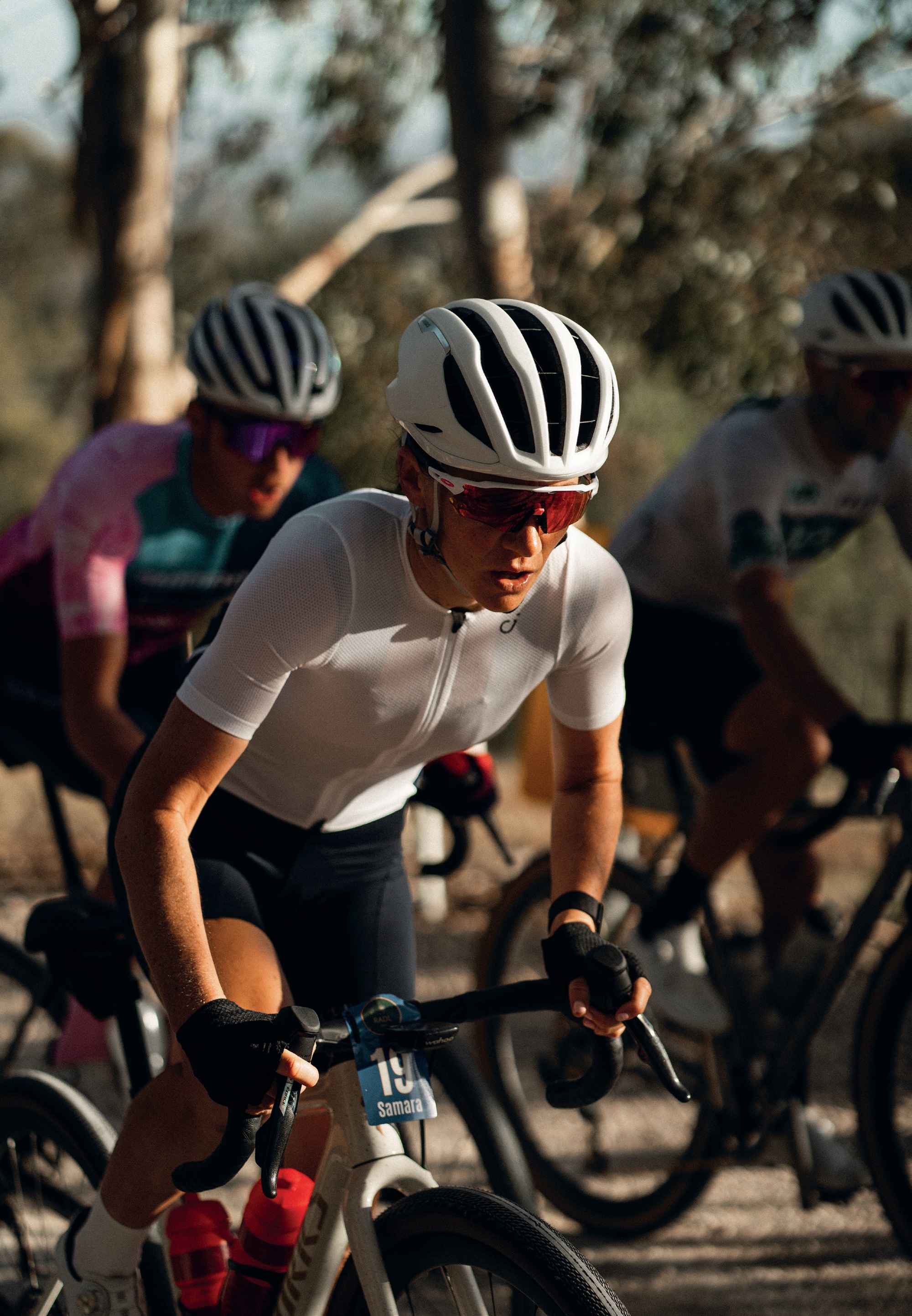
Weeks later, the pair lined up for the Lifetime Grand Prix (LTGP) opening round at Sea Otter Classic, Monterey, California, racing head-to- head rather than as a team. Carrying strong form from the Cape Epic, Samara took the podium, finishing second, just behind Sofia—a solid start to the Life Time series. “I took confidence from Cape Epic and a deep strength in my legs which set me up for a perfect start to the LTGP. Backing this up with a result at Sea Otter helped secure more industry support that has made the rest of the LTGP possible.“
Taking on a series that not only covers a long time span but also criss-crosses the US, provides some unique challenges; her first LTGP series has thrown her some serious curveballs. “As a privateer, the initial challenge was securing enough support to do it. Then there’s the logistics of traveling around the US, which is just gigantic; navigating visas so we don’t overstay; and finding a home base in the US, as travelling back and forth wasn’t realistic. Races from April to October. Extremely long endurance events. High altitude prep.”
Fortunately, Samara was lucky to become part of the Orange Seal (OS) Academy, easing the financial strain and providing top-notch coaching support, working alongside ex-world- tour pro, Dennis van Winden. “Not only do they make excellent tyre sealant, OS also get behind riders and have created a community in the US with their OS Academy. If it weren’t for John, the owner of OS, and Dennis, the Academy lead, it wouldn’t have been possible to race the LTGP this year. I owe this season to their encouragement and support.”
The LTGP has been a significant learning experience. Unfortunately, some of the learnings have been to the detriment of her performance. The Leadville Trail 100 MTB race is renowned as one of the toughest races in the world. Over its 170km, the course covers a massive 3,600 metres of elevation gain, reaching a peak altitude of 3,800 metres—roughly the same as the peak of Aoraki Mt Cook. “Everyone responds differently to altitude. With two rounds of the LTGP being at high altitude, I made the call to come over to the US three weeks ahead of the first one to acclimatise. By the time Leadville came around, I had spent seven weeks at high altitude (around 2000m). It’s hard to feel good on the bike at altitudes above 3000m, so I would consider doing multiple smaller blocks next time around.”
“Coming into this season, I thought a 100km MTB race very long. Racing Leadville this year opened my mind to what it’s like to race all day. Well, for nearly eight hours, over the 170km MTB course. The longest race in the LTGP— Unbound—is 320km long. Unbound was my drop race this year because I couldn’t fathom how to race that far. After the race, I had a bit of FOMO, so I’ll be working on getting my head and body around racing for 320kms next season!
“Then there have been other challenges like a herniated disc in my back that flared up, getting bitten by a dog whilst out training, which sent me to hospital for ten stitches in my arm and a mighty dose of antibiotics, then recovering from a concussion after hitting my head on the ground racing SBT Gravel (non-LTGP race). The most challenging part remains—to achieve what I set out to do: I took on the LTGP because I believe I have what it takes to finish on the overall podium. The challenge remains to make it happen.”
Following SBT, the circus was off to Chequamegon, where she finished 10th and scored 7th place points (three non-LTGP riders in front of her). Samara was showing signs she was on the way back from her injuries and looking strong heading into the Marathon World Championship and the final two LTGP rounds.
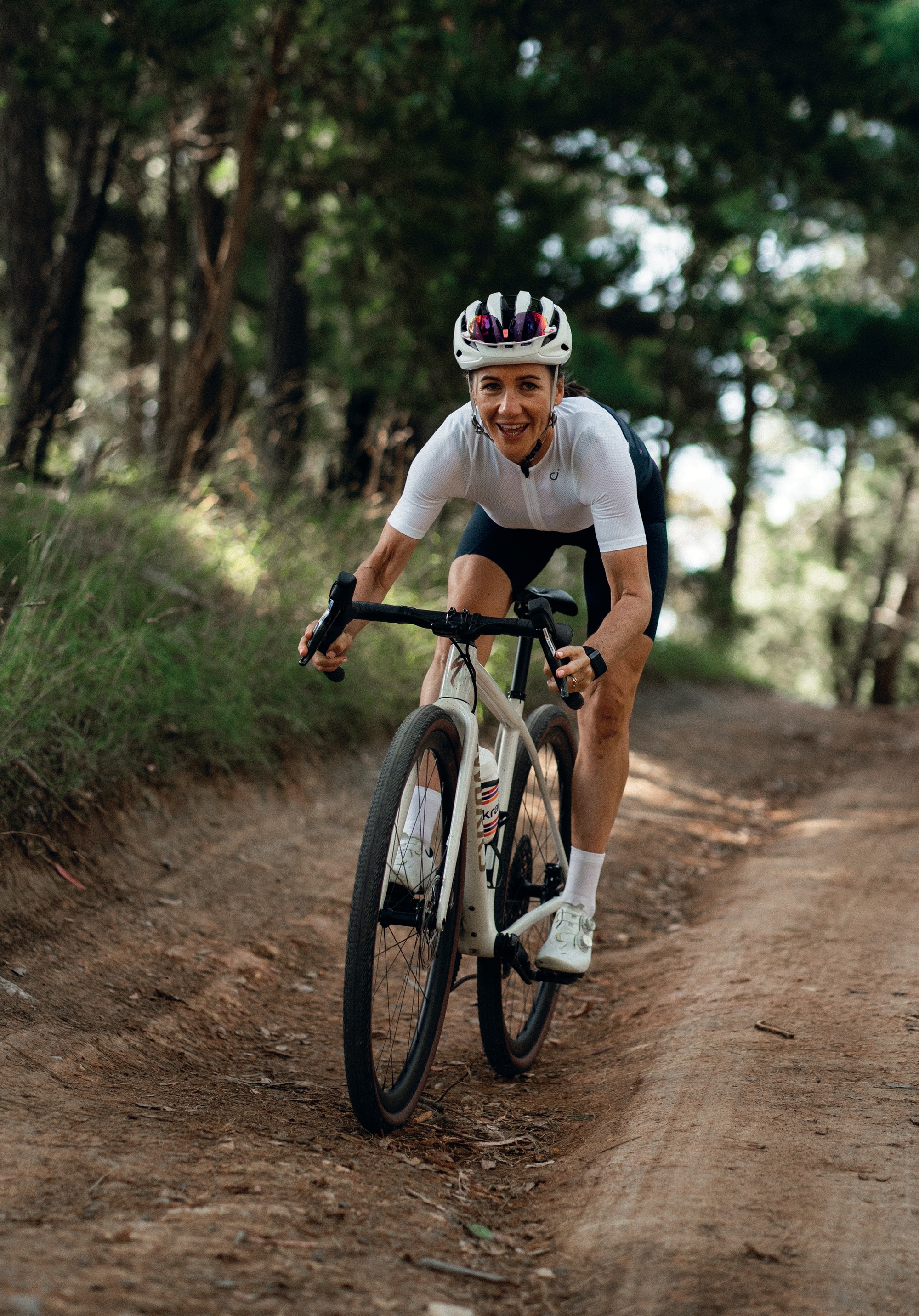
Next up was to be the UCI World Championships in Snowshoe, West Virginia. Once again, luck wasn’t on her side. “It was my first ride on the Marathon Worlds course, and the course markings and .gpx files didn’t match up, so I was a bit lost. I’d found some friends to try to figure out the course with. It had been raining for a few days, so the trails were slippery. I was following one of my speedy friends down a technical section, and I didn’t see a small stump that I clipped my pedal on. I went over the bars and hit my knee hard on a rock slab, slicing it open, causing swelling and aggravating my bursa. It also triggered some concussion symptoms from a crash I’d had four weeks prior.”
“It was really sad to miss out on racing Worlds. I’ve loved the buzz of World Champs ever since I watched XC Worlds in Rotorua in 2006 and competed in my first World Champs in Scotland in 2007. It’s a special opportunity to represent your country and race the best in the world, chasing a rainbow jersey—a big goal of mine, especially after finishing 6th last year and 5th in 2019.”
Unfortunately, her injuries sidelined her for LTGP round six, The Rad Dirt Fest, so her focus shifted to the final round—Big Sugar in Bentonville, Arkansas. “This season has had its fair share of highs and lows. Dealing with so many injuries and setbacks in one season has been tough, especially since I took a break from work to compete in the U.S. The smaller setbacks, like being bitten by a dog and splitting my knee open, were relatively minor and straightforward. But the concussion has been a completely different challenge. Every concussion is unique, and people can only tell you to be patient and take your time. You just can’t push through symptoms like you can with other injuries. “I remind myself that there’s more in life I want to achieve, and for that, I need a healthy brain. I try to be kind to my body, not overthink things, and focus on what I can control—like getting enough sleep, eating well, and appreciating where I am. Having a strong support system with Orange Seal Academy, led by Dennis van Winden, who checks in every day and brings a wealth of data to guide decisions, has been a big help. Making a plan based on both data and intuition helps me stay positive and keep moving forward.”
Now in its third year, the LTGP has been refined and built on each successive season, but there’s still work to be done. “I don’t like how the women’s races are influenced by men who are racing on the course at the same time. It’s great that the pro women have their own start wave this year, but if the women could race on a clear course, that would make the racing safer and more fair.”
The LTGP is the largest offroad cycling series in the world, and even though the pointy end of the competition gets most of the media attention, all seven rounds of the series attracts thousands of everyday riders keen to toe the line against the pros. “It’s also super inviting for beginners to pro riders. Combining the LTGP with mass participant events creates a fun community buzz. The LTGP are doing great things to develop fandom, like with the incredible docos they release 48 hours after the race, the pro panel discussions, autograph signings and ways they promote their series.”
“Once the season is over, my focus will be on recovery and building toward 2025. I aim to come back even stronger and wiser. My goals are still big, with plans to return for LTGP in 2025 and tackle a mix of endurance and ultra-endurance gravel and mountain bike events. I’m excited for what’s ahead.”



